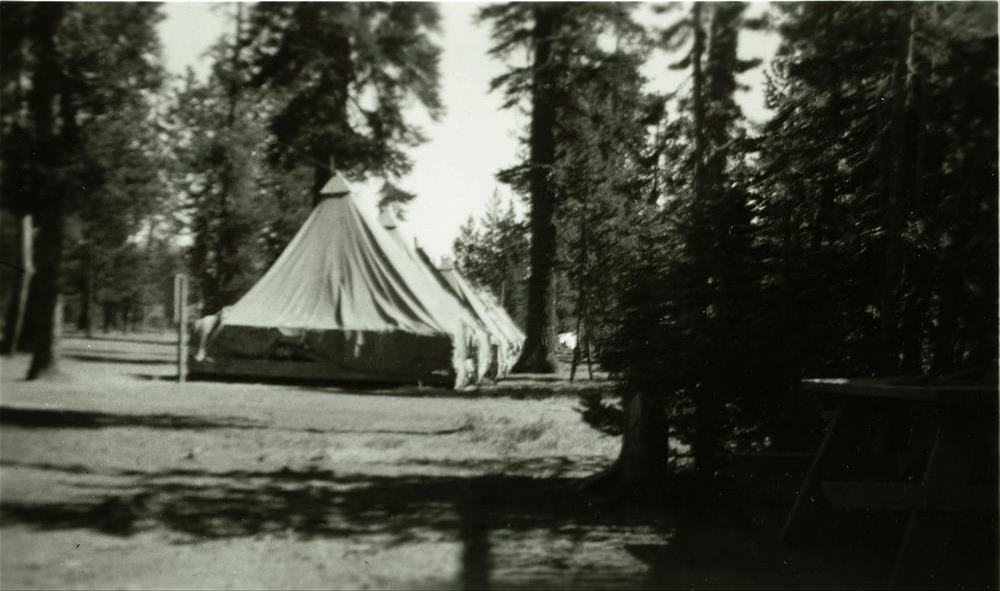EW described the Annie Springs (No. 1555) camp as largely composed to tents. The only frame building were the mess hall and latrines. The camp occupied the area of the present Mazama campground. Some of the enrollees had been to the Lava Beds and Oregon Caves camps the winter before, also had men from the USFS South Fork (near Butte Falls) camp. Most of the men at the Annie Springs camp had outdoor experience, very few from cities. Annie Springs enrollees would rarely venture over to Wineglass, little contact between these camps except for the occasional baseball game.
EW signed up at the CCC office located at the old fairgrounds in Medford (this is now occupied by GSA). Couldn’t get much return from mining in the Applegate area, so we able to enroll even though was underage by one year (the minimum age was18). Worked from April 1934 to March 1935, but was at USFS Camp Evans Creek from October 1934 onwards. When was being finished at Camp Annie Springs, there was eight to ten inches of snow on the ground. In late October, this large camp was broken up to smaller camps: Oregon Caves, Lava Beds, and USFS assignments like Evans Creek (where enrollees did mostly roadwork).
On the weekends, the CCC company would often run a truck for enrollees to go home. Two trucks to the Rogue Valley (one to Medford, the other to the Rogue River/ Gold Hill area) and one to Klamath Falls. The Medford truck would drop its enrollees at the RR depot and pick them up again on Sunday night. EW recalls one organized trip to Diamond Lake. There were no educational facilities at the camp in ’34 and facilities for entertainment were limited. Good food in the main camp, though there were some complaints (much better than most enrollees were getting before they joined up). Although the structure of the camp was based on a military model, it was informal. Visitors could come and go. Special dinners were sometimes held, EW met his eventual wife on one of these occasions.
Before the taped portion of the March 17 interview, we discussed the backcountry cabins and their construction. EW said that the crew had their own cook and that bears sometimes gave the crew problems, particularly at Maklak. He identified locations of several cabins on the photo file cards where identifications had not been made. He didn’t remember the Bear Creek cabin nor the west boundary cabins, as the crew did not work on them. The Maklak cabin was clearly the most memorable, as it was built on the spring and attracted much wildlife. The bears here constantly raided the crew’s provisions. Canvas tents were used by the crew when working at a site, so little could be done to deter animals.


